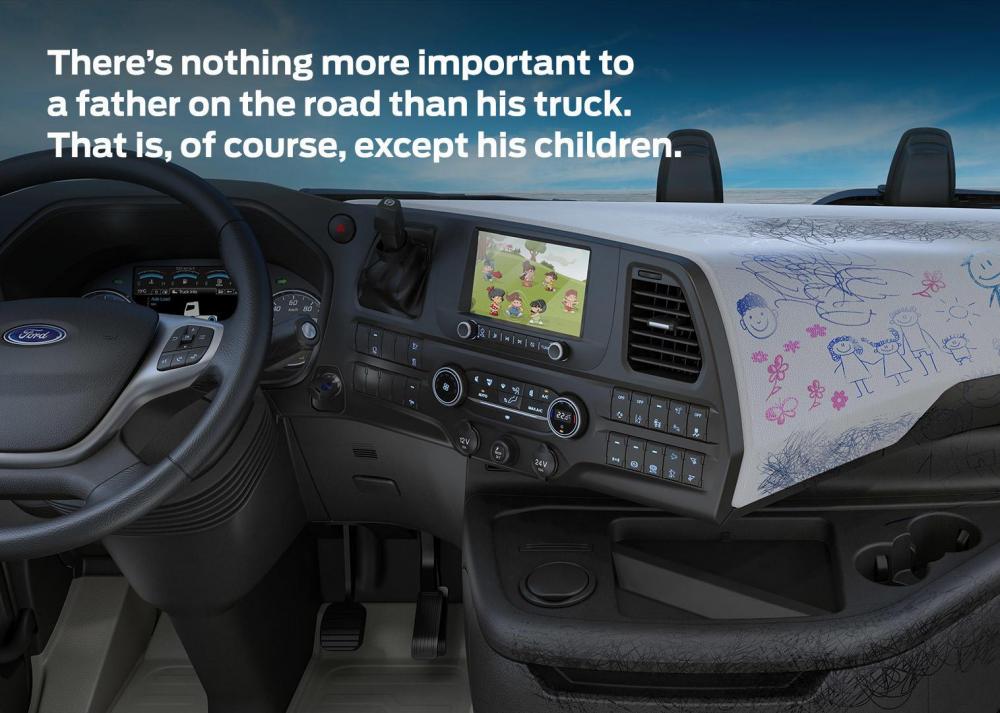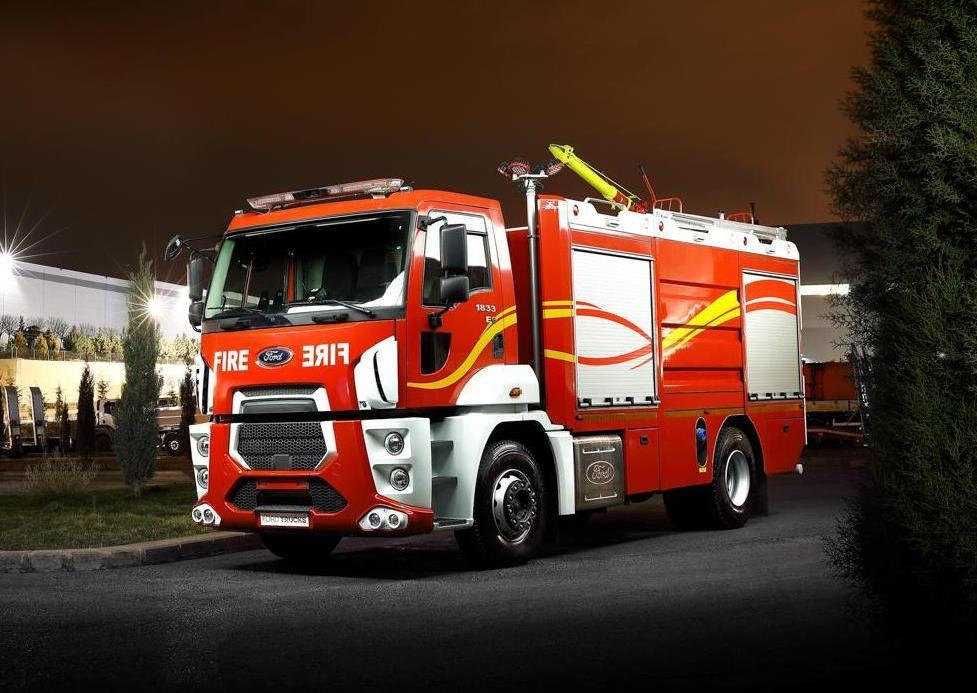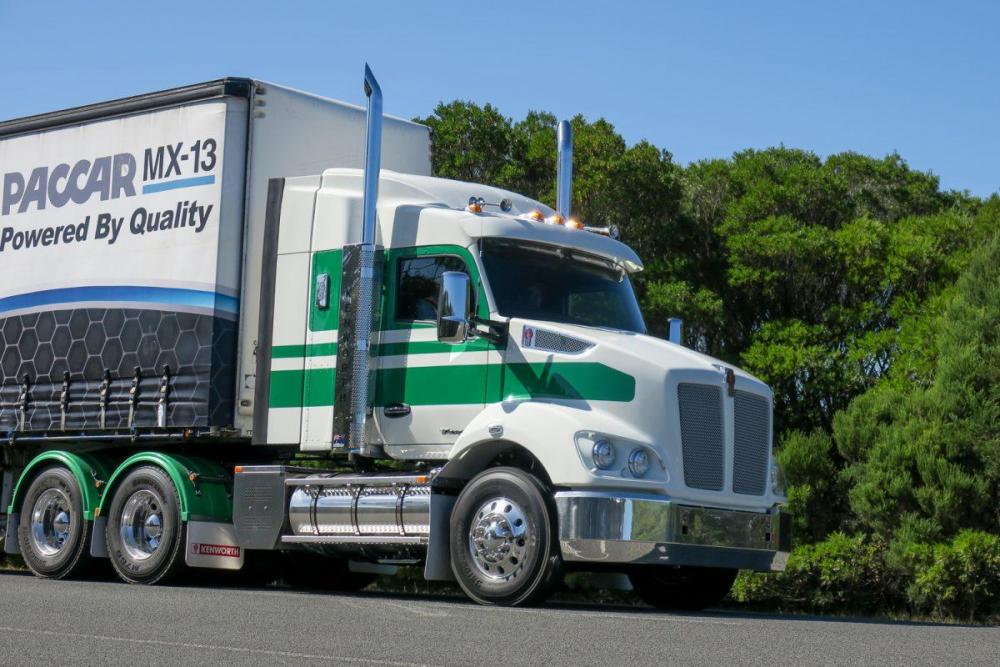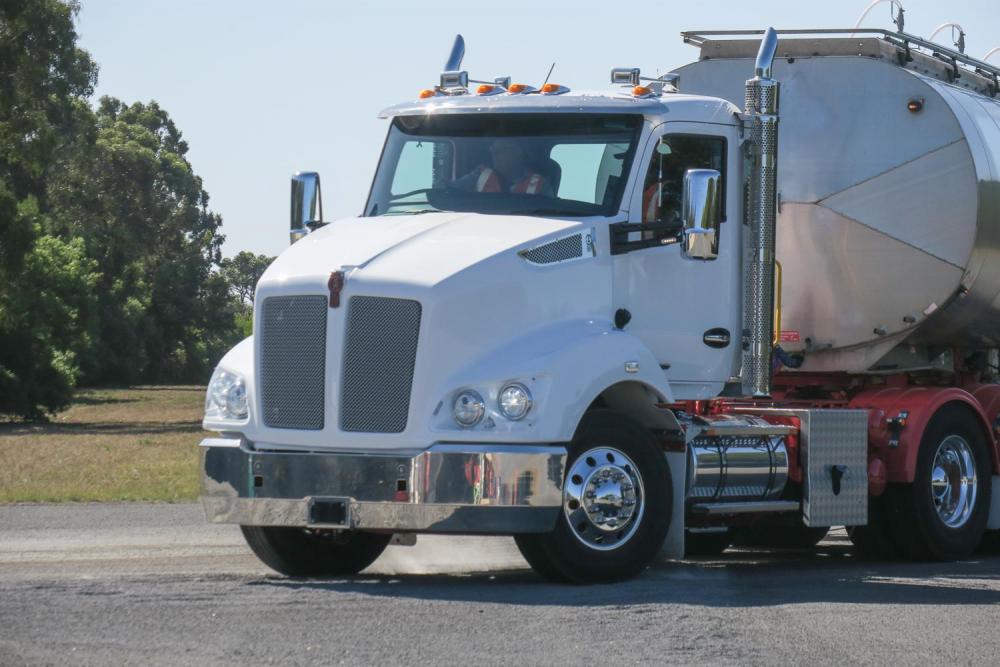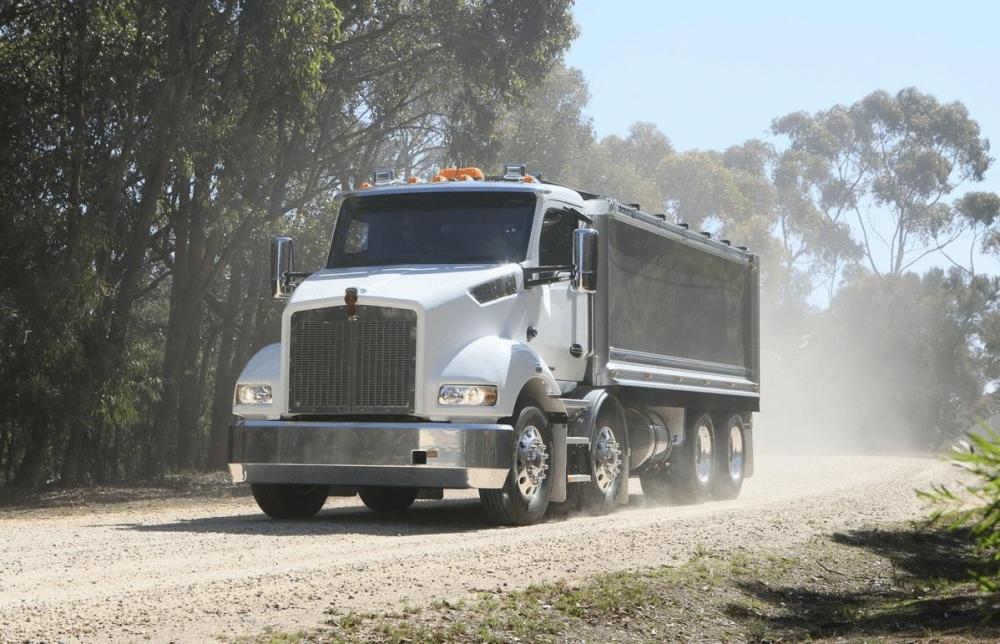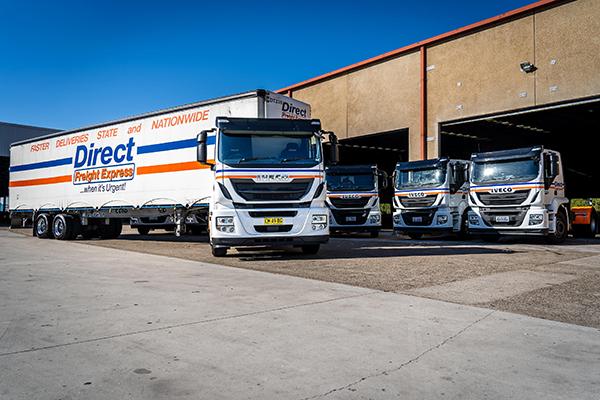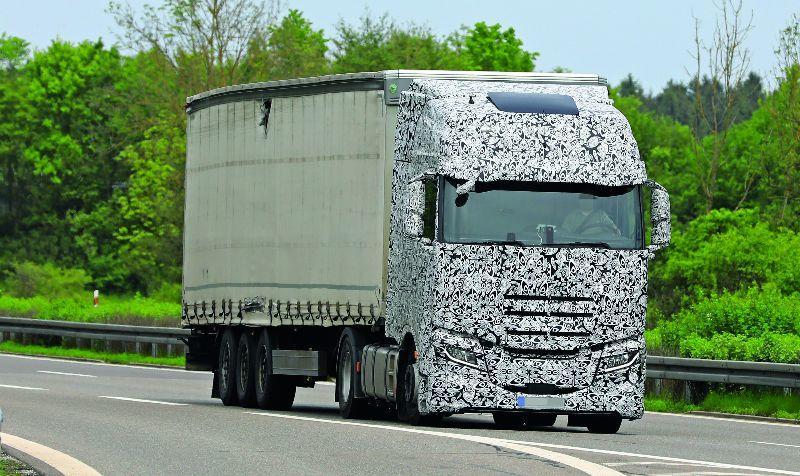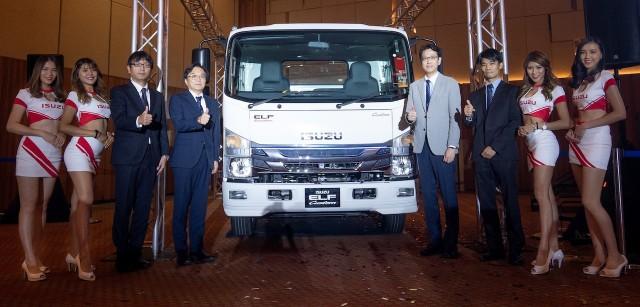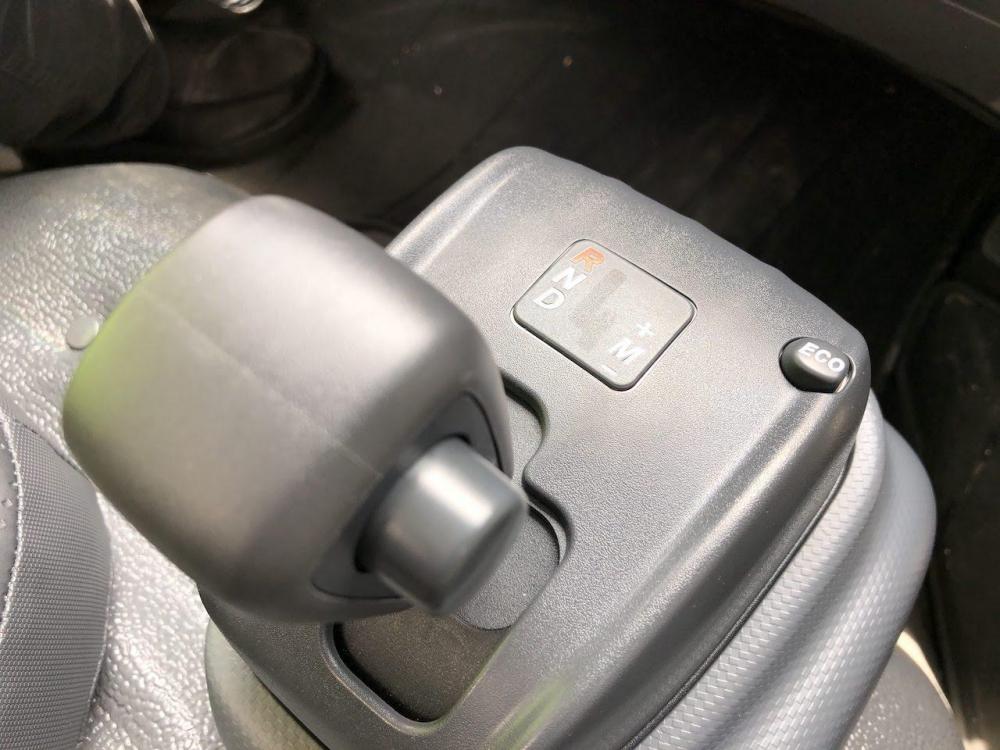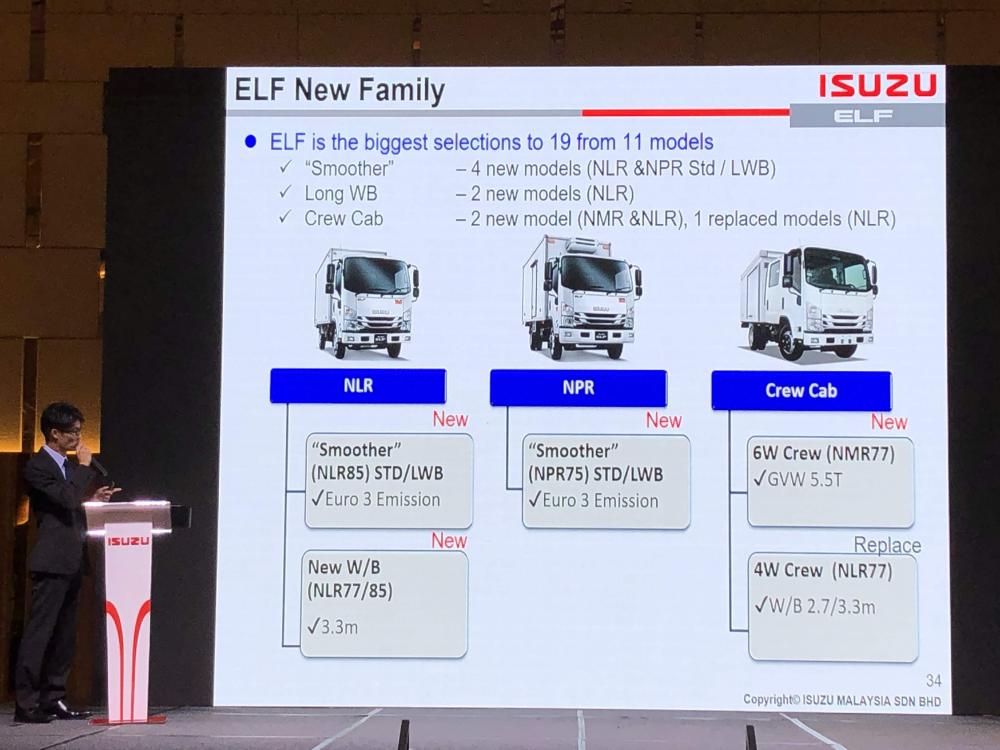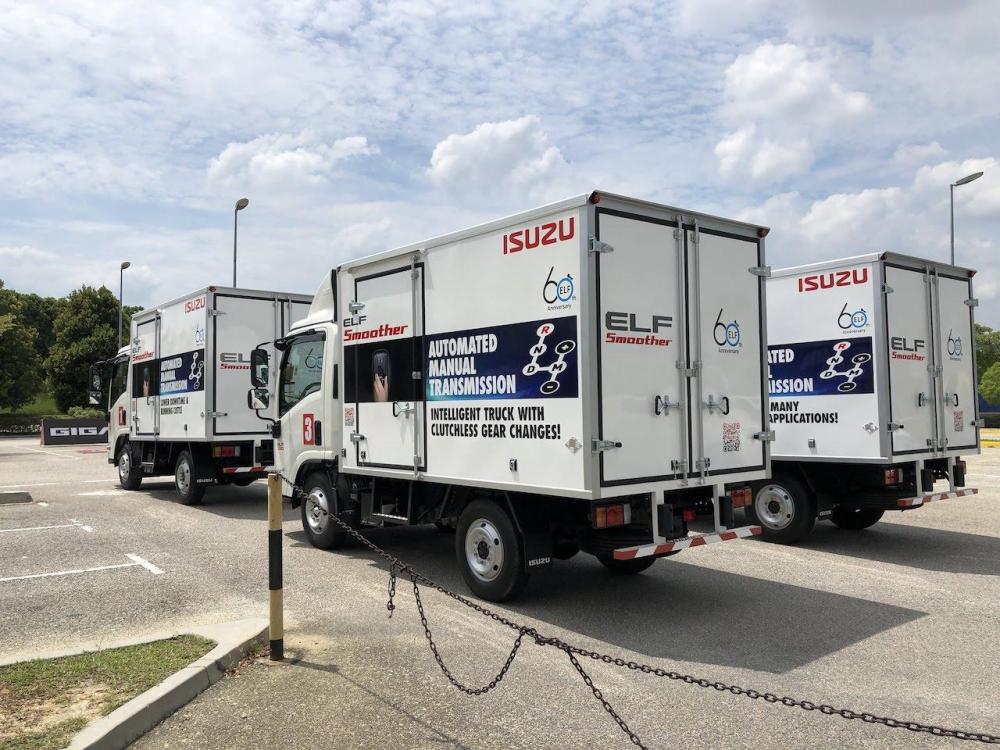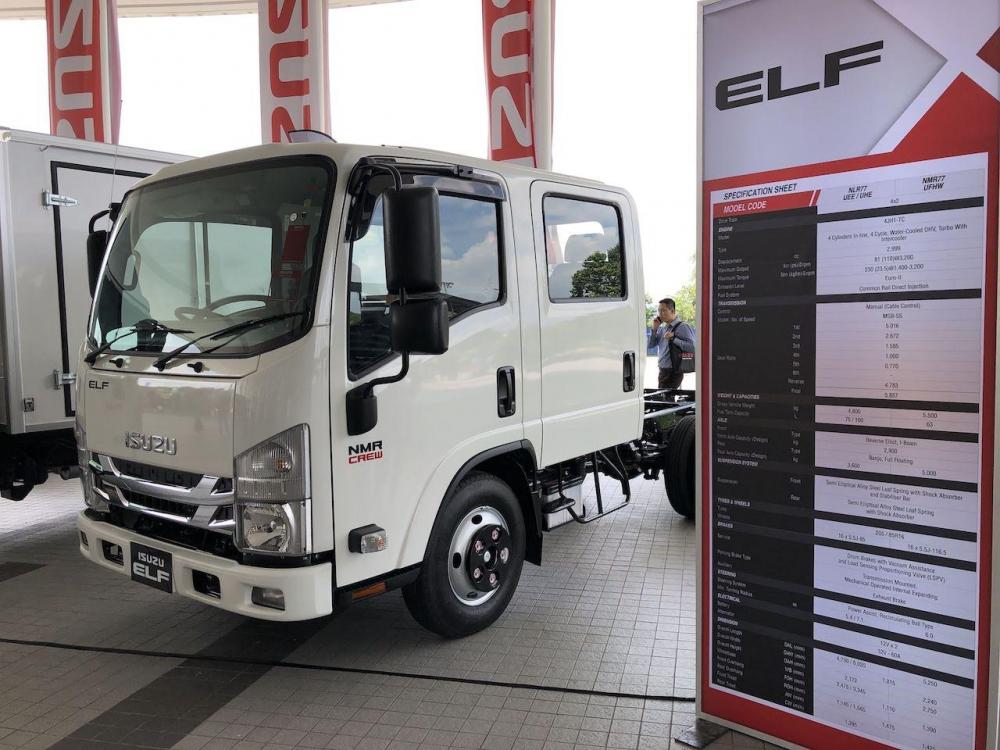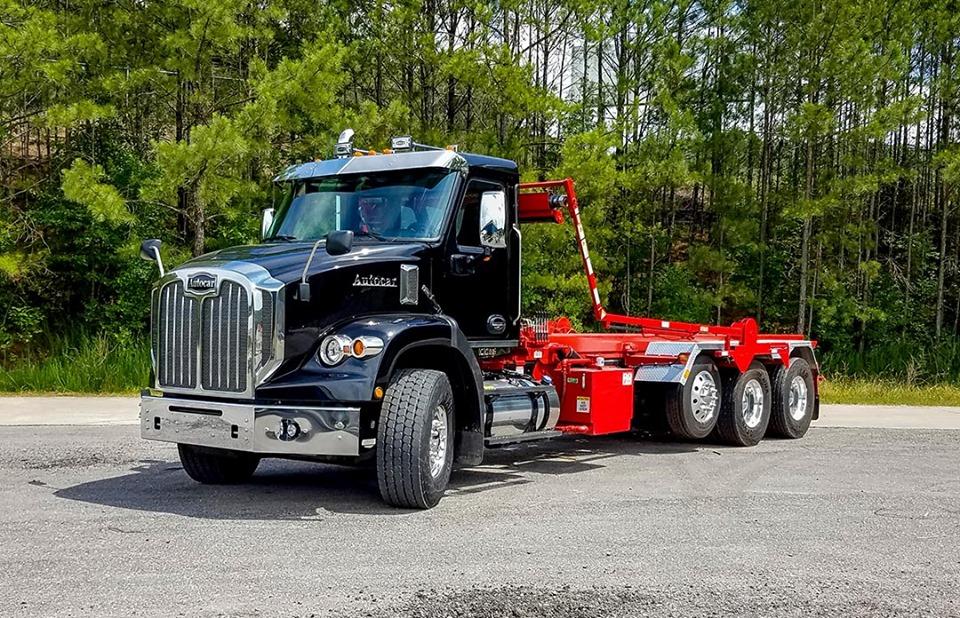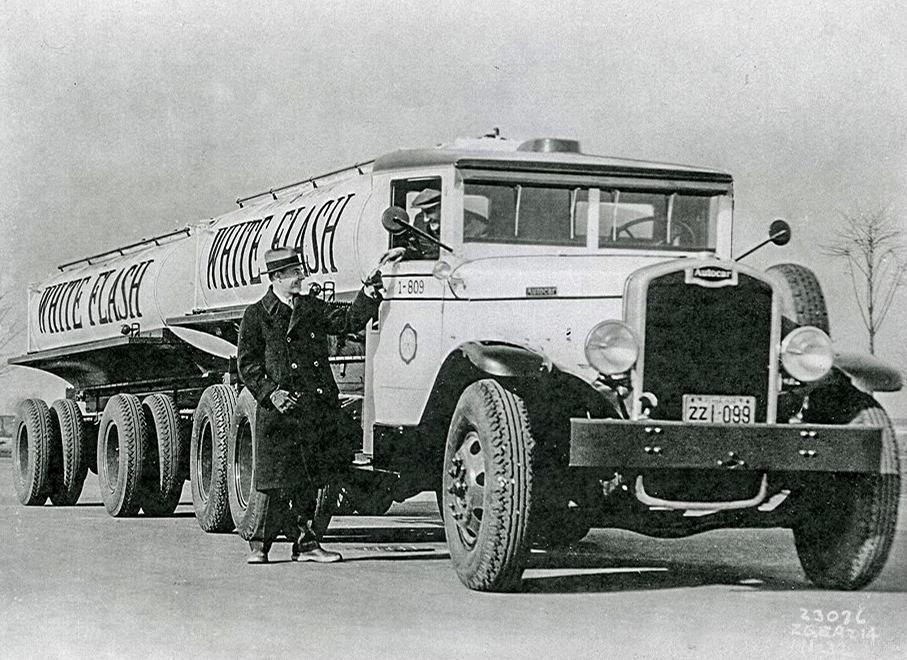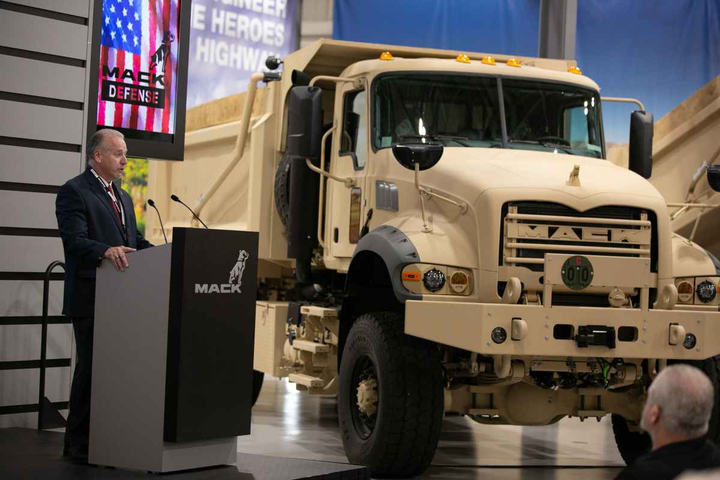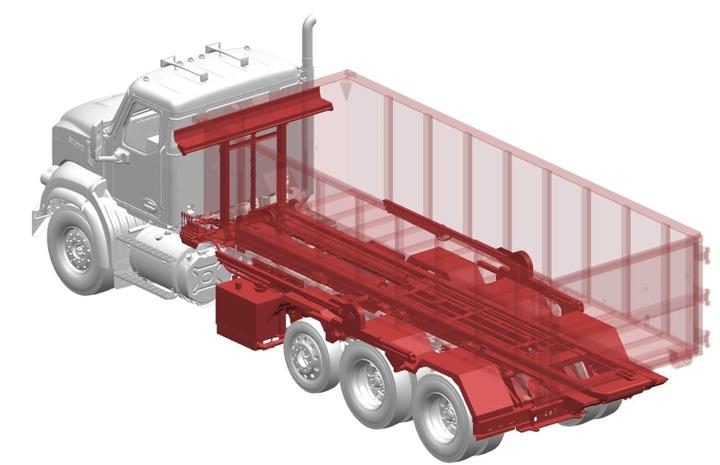
kscarbel2
Moderator-
Posts
18,544 -
Joined
-
Days Won
112
Content Type
Profiles
Forums
Gallery
Events
Blogs
BMT Wiki
Collections
Store
Everything posted by kscarbel2
-
"We've got a plan," Engle said. They didn't have a plan before? Or was it years and years of bad plans?
-
GM urges patience as Silverado falls to No. 3 Michael Wayland, Automotive News / June 17, 2019 Sticking to its focus on profit, not share DETROIT — General Motors' prolonged ramp-up of the redesigned Chevrolet Silverado has put the longtime No. 2 pickup in an unfamiliar, uncomfortable position: third in Detroit's three-way race. Ram has beaten the Silverado in nine of the past 10 months, according to U.S. sales estimates from the Automotive News Data Center that have been validated by GM's quarterly reports. The Ram has outsold the Silverado by 36,619 since the latest Silverado 1500 hit dealerships in August and holds a lead of nearly 22,000 five months into 2019. Including the GMC Sierra 1500, which was also redesigned at the same time, GM's full-size pickup share was down 3 percentage points in the first five months of 2019 compared with the same period a year earlier. With the Sierra, GM remains in second place in the full-size segment, behind Ford Motor Co. But GM executives insist the shake-up in a closely watched battle with major image and profit implications isn't a sign of trouble. They say the trucks' launch is going as planned and that GM is focused on profits, not market share. Barry Engle, who became GM's president of the Americas on April 1, played down declining Silverado sales as a "temporary phenomenon" that will be corrected with more capacity and a normalization of production. "Given our limited availability, we deliberately launched with a really high mix in trims," Engle told Automotive News this month. "But as we get broader availability and get the full portfolio out there, we'll be just fine." Broader availability includes increasing annual capacity of the pickups by 60,000 — 40,000 for the heavy-duty models and 20,000 for the 1500s. The increased capacity will aid plans to roughly double production of the Silverado Trail Boss, an off-road-inspired trim, to more than 20 percent of the mix, Engle said. The increase is a result of the brand's national dealership council saying retailers needed more inventory of the models."We're selling every one of those we can make, and the real demand for that thing is probably double what we thought it would be and what we capacitized at," he said. "The dealers are just screaming for more." GM also has not started selling the redesigned pickups to fleet customers in any significant numbers, Engle said. Fleet will be "all plus business" on top of the automaker growing its retail share of the market, he said. The Silverado's share of the light-duty retail market, according to Engle, has risen from 21 percent in January to 26.4 percent in May. The Sierra is up 1.9 percentage points to 10.5 percent, GM said. "I think you see a trend there," he said. "We're back and we're, as I've described, just starting to hit our pace." GM has touted the introduction of its so-called T1 trucks, which also include its full-size pickups and SUVs, as the automaker's single-largest launch ever in terms of resources. ‘Fleet is flat' Fiat Chrysler Automobiles CEO Mike Manley made Ram's intentions to outsell Chevrolet well-known last year, after the company's redesigned pickups hit the market months before GM's. GM has sold more than 800,000 full-size pickups in the U.S. on average over the past four years. However, combined sales of the GMC Sierra and Chevrolet Silverado are down 7.9 percent in 2019 through May, according to Automotive News Data Center estimates. In contrast, Ram pickup sales are up 22 percent. Randy Marion, owner of Randy Marion Chevrolet in Mooresville, N.C., said he has "no issues" with the redesigned Silverado but looks forward to getting more vehicles for his fleet business, which ranks among the top five in the country for Chevy. "Our days' supply is very low on the fleet and commercial side of it," Marion said. "Our retail Silverado is up 27 percent over last year, and our fleet is flat." GM and its dealers started June with an estimate of 200,000 Silverados on hand, roughly equal to the number of Rams in inventory, and an estimated 74,000 Sierras, according to the Automotive News Data Center. Based on how quickly the vehicles are selling, those figures equate to a 99-day supply for the Silverado, 98 days for the Sierra and 85 days for Ram. Another longtime Chevrolet dealer who asked for anonymity to avoid repercussions from the factory said the Silverado rollout has been ineffective for dealers due to a lack of incentive support, the increased pressure from Ram, and difficulty getting certain trims and engines earlier in the launch. Average incentives for the Silverado and Sierra have been about $500 less than Ram in 2019 but $1,500 more than the Ford F series, according to estimates from Autodata. GM President Mark Reuss last week said he always has a wary eye on competitors but that the company is on plan and just beginning to sell lower-priced models of the pickups — a part of the segment where Ram has been aggressive with incentives and leasing. "We look at that and monitor it and, yeah, we're always worried about it, but we've got a great truck and we continue to roll it out in a high mix," he said June 12 after announcing a $150 million investment in Flint, Mich., to help increase production of the Silverado HD and Sierra HD. "And now we're getting into the work truck and the high-volume, lower end of the price points on the T1s. We've got a good plan." Ram's U.S. sales through May were 231,382, vs. an estimated 209,688 for the Silverado. Including an estimated 77,873 for the Sierra, GM still led FCA in full-size pickups by about 56,000, though both companies trail the F series, which has posted sales of 368,972 this year. Quicker launches Last week, GM started shipping the 2020 Silverado HD and 2020 Sierra HD to dealers. The production ramp-up for those pickups will continue this year, ahead of the expected arrival of GM's redesigned full-size SUVs in 2020. Each of those launches, Engle said, will take less time than the rollout of the 1500 pickups, as they involve lower volume and only one plant at a time. The company also is applying lessons learned from launching the 1500s to those products. "It will be the same measured approach, the same idea, the same philosophy, but we will be able to accelerate it," Engle said. "It won't take as long." GM started producing crew-cab models of the redesigned 1500 pickups in July in Fort Wayne, Ind., followed by double-cab models in October. GM's plant in Silao, Mexico, came online with regular-cab and crew-cab models around the beginning of the year. The pickups started arriving at dealerships in August, about four months after Ram began shipping its pickups. "We've got a plan," Engle said. "We're in this for the long haul." ------------------------------------------------------------------------------------------------------- Silverado versus Ram [aka. Dodge Truck] Silverado sales margin over Ram 2015 150,422 2016 85,458 2017 85,141 2018 48,601 2019* -21,694 *Through May
-
Navistar to Build Next-Gen Diesels at Alabama Engine Plant
kscarbel2 posted a topic in Trucking News
Heavy Duty Trucking (HDT) / June 17, 2019 Navistar announced a $125 million investment in its Huntsville, Alabama, engine plant as part of a plan to begin producing next-generation big-bore diesel engines developed with its European partner, Traton, in the future. Navistar makes International brand diesel engines at the plant, and plans to make the new investments over the next three years. The principal engine currently built at Navistar's Huntsville plant is the International A26, a 12.4L big-bore [MAN D26 derived] engine offered in Class 8 on-highway trucks such as the International LT Series and RH Series, as well as in vocational trucks such as the International HV Series and HX Series. According to local news reports, part of the expansion is relocating to Huntsville a gear box assembly line. In 2017, Navistar and VW told reporters that the two companies would collaborate on a fully integrated, next-generation diesel big bore powertrains for North America, launching in 2021. It also said at the time that it expects to be in a position to launch its first medium-duty electric powered vehicle for the U.S. and Canadian markets in late 2019 or early 2020. "Over the last two decades, the state of Alabama has been a wonderful partner for Navistar as we have developed and produced big-bore engines and other products in the state," said Persio Lisboa, Navistar's executive vice president and chief operating officer. "Today, we are excited to have the opportunity to expand our presence in Alabama, while adding to our array of next-generation products." In 2014, as part of its turnaround efforts, the company announced it was moving its mid-range engine production from Huntsville to its Melrose Park, Illinois, plant. -
There's no "fine line" about it.........copying is copying.
-
Ford suits show ‘fine line' in patent cases Michael Martinez, Automotive News / June 17, 2019 In 1993, on an otherwise drama-free June day in America's heartland, Ford Motor Co.'s future product development and purchasing boss, Hau Thai-Tang, faced a crisis. He was embedded with the Newman/Haas racing team throughout the IndyCar season and was preparing for a race at Milwaukee Mile in Wisconsin. It was the team's de facto home track, and Newman/Haas expected an easy victory. But during practice, another driver consistently outperformed the team's stars. Initially flummoxed, Thai-Tang's group eventually discovered the rival car had been outfitted with a part near the front wheels that made it faster by pushing away turbulent air. Under immense pressure, Thai-Tang and his team quickly mocked up designs for a similar device, faxed them to the team factory outside Chicago, and had the part built, overnighted and bolted onto the car in time for qualifying the next day. Although the rival team secured the pole position, Newman/Haas won the race. "These guys are obsessed about understanding the competition," Thai-Tang recalled to Ford employees during a 2018 presentation. "They copy with pride; there's no hubris there. If they think somebody else has a better idea, it doesn't last for very long." That idea — "copy with pride" — may be common in a competitive marketplace. If a rival beats you to market with a useful technology or feature, the thinking goes, it's often easier to swallow your pride and adapt something similar rather than spend millions of dollars to essentially reinvent the wheel. Greg Reilly, an assistant professor at the Illinois Institute of Technology's Chicago-Kent College of Law, said the U.S. patent system encourages engineers and others to "design around" inventions to improve upon them. Fraught with risk But that comes with tremendous legal risk. It's not hard for an effort to "design around" or "copy with pride" to devolve into illegally stealing trade secrets or intellectual property. "It's an incredibly fine line," Reilly says. "You can be infringing on a patent without even knowing." Some high-profile lawsuits against Ford illustrate the difficulties automakers face when navigating those thorny issues, especially as vehicles increasingly rely on complex software and technology. Versata Software Inc., a Texas software developer, sued Ford in 2015, claiming the automaker illegally developed a copycat program of what it used to pay Versata to supply. While such lawsuits are not uncommon, the case continues to dog Ford four years later. Versata has spent tens of millions of dollars pursuing the case, hiring high-profile lawyer Lanny Davis — who was a special counsel to former President Bill Clinton and who represented President Donald Trump's former attorney, Michael Cohen — and Bo Dietl, a New York private detective and former Arby's pitchman. The case is expected to go to trial in November. This year, three Massachusetts Institute of Technology professors sued the automaker claiming Ford stole their patented dual port- and direct-injection technology to use on the country's top-selling vehicle line, the F series. Hollywood turned one dispute with Ford into a 2008 film, Flash of Genius, that chronicles the company's protracted legal battle with inventor Robert Kearns during the 1970s and 1980s. Kearns ultimately won his case against Ford, which was found to have infringed upon his patent for an intermittent windshield- wiper mechanism. "As a general matter, for a company that is developing new technology to know what's out there and know whether they're violating patent rights is a difficult question," Reilly said. "There's some real tough situations." Ford declined to comment for this story. Versata case Versata and its attorneys argue that the company's case is cut and dried. It centers around proprietary software, known as Automotive Configuration Manager, that Ford had licensed from Versata to help identify incompatible parts in millions of possible vehicle configurations. Versata accuses Ford of having workers with firsthand knowledge about the Versata product copy it so the automaker could stop paying for it. Versata says Ford even used identical terms and phrases from Versata's manual for the Automotive Configuration Manager software. Ford, soon after the lawsuit was filed, claimed it began developing replacement software in 2010 and that the technology is different from Versata's. "Ford's invention approaches vehicle configuration very differently, and more efficiently, than" Versata's technology, Ford said in a filing. Versata is seeking at least $180 million in past damages, and it wants Ford to remove the software, which could potentially affect its manufacturing operations. Versata, from the outset, has taken its complaints public. Its lawyers held a 2015 press conference with an elaborate display of a cutout of Henry Ford standing by a faux brick wall with a large hole in it, representing the internal divide that Versata says Ford breached by having people with knowledge of Versata's software develop the in-house replacement. Dietl became involved when Versata hired his investigative firm to find evidence of theft. Ford has accused Dietl's firm of harassing witnesses, a charge he denies. Dietl subsequently took out full-page ads calling on executive Elena Ford, who Dietl says is on a committee that oversees the automaker's software and technology use, to apologize. "We're going to use whatever resources we need to for justice," said a senior Versata executive who asked not to be named because of the ongoing litigation. MIT professors Most intellectual-property disputes, Reilly said, can be difficult to litigate because they involve a lot of he said, she said. Many cases stem from efforts by an inventor or startup to persuade a large company to adopt a technology. The company may decline the technology but soon brings something similar to market. That's the situation described in a January lawsuit against Ford by three MIT professors. They claim the automaker stole technologies used in its popular EcoBoost engines. The suit, filed in federal court in Delaware, says the professors transferred ownership of their creations to MIT, which then granted exclusive patent-licensing rights to a small company the three founded, Ethanol Boosting Systems. EBS offered to license patents for the enhancements to Ford in 2014, but the automaker declined. The suit alleges that Ford's counsel for global engine intellectual property "indicated that Ford had no plans that he knew of to use that technology in its vehicles." But, the professors argue, Ford has since applied their technology to a number of vehicles, including the F-150 and Mustang.
-
Ford Trucks International / June 16, 2019 There’s nothing more important to a father on the road than his truck. That is, of course, except his children. Happy Father's Day to fathers everywhere. .
-
Ford Trucks International / June 12, 2019 Fire trucks from Ford Trucks are built for maximum customisation and ergonomics! . 1507940147251-drlcss.mp4
-
Driving the new Kenworth T410 and T360 Diesel News Australia / June 2019 It was a great opportunity, driving the new Kenworth T410 and T360, this is the next step for Kenworth in the process of integrating their new cabin concept across the whole range. Diesel News look the trucks for a short test drive. The two new models from Kenworth are the T410 and the T360, effectively replacing the current T409 and the T359. These are the latest updates to the Kenworth range, as the 2.1 metre wide standard cabin design works its way across the offering from the Bayswater-based company. The first in the sequence was the introduction of the T610, which came out two years ago and has been accepted as a viable model. In fact, the T610 and the T610 SAR has comprised over 30 per cent of the recent production at Paccar’s assembly plant in Bayswater. This is not just a new cabin introduction; it is radical progression of the Paccar product in Australia, designed to keep up-to-date with developments in the US and in Europe. Along with the 2.1 metre cab shell there is also the latest electronic architecture. Gone is the tightly packed spaghetti of wiring behind the dash.This has been replaced with a state-of-the-art CANbus – electronic control and sensors all communicating and powered through the same channels. While the rest of the Kenworth range, now becoming known as the ‘legacy’ models, were conceived in the pre-electronic age, the new truck models are capable of handling the future demands of ever-increasing sophistication in systems. The new trucks are able to offer, as options, all of the latest and greatest safety equipment, like active cruise control, lane keeping, reversing camera, dash cams and more. This increased computing power also puts more data at the disposal of both the driver and the operator. All of the parameters a driver needs are available from scrolling through the screens and there is also a suite of driving tips that mark a driver’s performance and congratulates them when they do a good job. It is important to understand that Kenworth are thinking very differently about how they build trucks than they were 20 years ago. The customised Kenworth trucks are highly prized and the brand’s reputation was built on the truck maker’s ability to build a truck to suit the task in a tailormade way. This led to the development of a diverse offering of trucks with many interchangeable components. Truck manufacturing and technology have changed swiftly in recent years and many customers are looking for vehicles with sophisticated electronics to control, monitor and keep the truck safe. At the same time the number of components available to the Kenworth buyer has diminished with the growth of the proprietary driveline by global truck manufacturing groups. Paccar as a group has the capacity to build these highly sophisticated systems in both Europe and North America. There has also been a move towards a more proprietary driveline with the introduction of the Paccar engines and, now, even a Paccar-branded transmission. At the same time, Kenworth sales in Australia continue to boom – they dominate the heavy duty market. The relatively small plant at Bayswater has been undergoing a series of improvements and reconfigurations to make it more efficient and increase build capacity. Now, an new extension is being built to increase capacity even more to cope with increased demand. One of the premier efficiencies being developed is the use of a single design for a standard 2.1 metre wide cabin across much of the top selling range. This simplifies the building process, speeds it up and reduces the costs of research and development across the range. The new design also includes an electronic architecture capable of taking the Kenworth product into the foreseeable technological future. .
-
Prime Mover Magazine / June 11, 2019 Road service carrier, Direct Freight Express (DFE), has added an additional 10 IVECO Stralis 4x2 low roof AT models to its intrastate fleet to haul a range of palletised goods. DFE now has 15 IVECO Stralis trucks in its fleet. DFE National Operations Manager, Jason Elliott, said that for single trailer urban and metro delivery, it was difficult to go past the Stralis. “We’ve operated Stralis for a number of years now in single trailer work around town and have been impressed with how they’ve performed, this was one of the main reason why we again went with Stralis with the latest trucks,” said Elliott. The trucks feature Series II Cursor 13 engines producing 460hp and 2100Nm of torque and are matched to 12-speed Eurotronic Automated Manual Transmissions. It is a driveline that when combined with rear 4-bag ECAS (Electronically-Controlled Air Suspension), provides a solid platform for the application, according to the commercial vehicle manufacturer. “These trucks normally operate towards the top of the weight ranges (up to a Gross Combination Mass of 44 tonnes) but have more than enough power to do the job," said Elliott. "They also have a fantastic turning circle which is important for deliveries around town." Other key considerations in the purchase of the Stralis models were driver comfort and safety features, areas in which the vehicles perform strongly, according to Elliott. “The Stralis are well equipped with safety features and are really comfortable to drive in city conditions, our drivers really like them,” he said. DFE service and maintain their vehicles internally and reportedly prefer to keep equipment on fleet for the longer term, gradually changing a vehicle’s work demands as it ages. “We might have a prime mover that is on interstate work for several years, as it ages we could reassign it to metro work where it will cover less kilometres, and ultimately it might end up being used as a terminal tractor at one of our depots," said Elliott. “If a truck has been well maintained and looked after it makes sense to do this and you can get a lot of life out of them.” Jason also said that the Stralis’ are straight forward to maintain. “The Stralis are easy to work on, and we’ve not had any issues with them over the time we’ve run them,” he said. “For what you get in the Stralis, which is a well-rounded overall package for this sort of application, they provide us with so much 'bang for our buck'." Last month, IVECO confirmed the first locally produced group of Stralis X-Way models rolled from the manufacturing facility to dealerships across Australia. .
-
https://www.bigmacktrucks.com/topic/35959-fiat-powertrain-technologies-fpt-unveils-845-horsepower-cursor-16/?tab=comments#comment-247958
-
Diesel News Australia / June 2019 According to reports on European websites, including Commercial Motor, Iveco are about to release a new version of the Stralis, and included in those plans is a big banger from Iveco. Reports suggest a completely new cabin for the Stralis among a substantial range of new features. One of the most important suggestions coming out of these reports is that there is a new 15.9 L engine which going to become available with the new trucks. The CNH (Iveco’s parent company) organisation does have a 15.9 L engine in it’s portfolio, powering agricultural and marine applications. It has been suggested that this engine has been adapted for use in a truck. So far, the only pictures available are these camouflage shots taken somewhere on the roads in Europe. The reports also tell us that the name Stralis is to be dropped and be replaced by some form of numerical classification. The construction vehicles being sold by Iveco are also due for an update and are expected to be sold under the Magirus brand-name in Europe. Although this brand name was used for trucks in the past, mostly before Iveco bought out Magirus Deutz, its only use has been for the fire trucks produced by CNH. Here is an image published earlier this year by Iep van der Meer in his Iepieleaks website showing the drastic changes to cabin design. Of course, the Australian market will certainly have to wait to see any of these supposed innovations. The chances of any 16 L engine expected to be arriving here in Australia any time soon are very slim. This is a new major component for Europe and we can expect evaluation to carry on for some time before this engine is released into overseas markets like Australia.
-
ISUZU Launches New Truck Range With ‘Smoother’ AMT Gearbox
kscarbel2 posted a topic in Trucking News
Big Wheels Malaysia / June 4, 2019 Isuzu Malaysia has just launched it latest range of light trucks targeted for inner city deliveries, light cargo transportation, small business owners and also food truck operators. The added good news is that this new range of light trucks also include the popular ‘Smoother’ gearbox which is Isuzu’s very own auto gearbox system for light trucks. The ‘Smoother’ gearbox offers the full benefits of an automatic transmission but with the reliability and low running cost akin to manual transmissions, “Smoother” offers a significant advantage as the gears are directly coupled thus do not suffer from energy loss through hydraulic slippage. Furthermore, Isuzu’s “Smoother” selects the most appropriate gear for the given driving condition. This ensures that the engine revolutions remain within its optimal range thus extending the life of the engine and drivetrain. On the “Smoother” models, there is even a secondary ECONO Mode that the driver can select to automatically change gears at lower engine revolutions, providing even greater fuel savings. Isuzu Press Release: With the new range of ‘smarter’ delivery and working trucks, Isuzu Malaysia is poised to retain its position as Malaysia’s top truck brand following the showcase of its latest dependable and efficient Elf and Forward truck variants today. The new trucks that will be available for sale from the third quarter of 2019 are expected to further increase the brand’s appeal, particularly in the light-duty segment where the Isuzu Elf models have enjoyed the title of Malaysia’s top-selling truck range for the last nine consecutive years. Globally acknowledged by truck operators for its highly dependable performance with low running costs, the Isuzu Elf range is also one of the most versatile in the market with eleven variants of various tonnage and drivetrains available to suit the individual requirements of users. Once the new 2019 line-up comes on stream, Isuzu Malaysia will offer 19 variants of the Elf covering 4-wheeler, 6-wheeler, 4×4 and Crew-Cab versions, giving it the widest range of light duty truck options in the market. Of particular interest to businesses that operate their vehicles in frequent stop-start and congested urban environments will be the availability of selected truck models fitted with “Smoother”, a 6-speed Automated Manual Transmissions (AMTs) as factory variants. Although the initial purchase price of the “Smoother” models is higher, business owners are able to enjoy lower running costs as fluid coupling doesn’t cause wear and tear. It will also be easier to employ drivers as the pool of drivers who can handle manual transmissions is shrinking. Drivers too will find the “Smoother” models a boon and less fatiguing, enabling them to better retain concentration throughout their workday. With the proliferation of E-commerce, the new Isuzu Elf variants offer the perfect solution to the rising demand for dependable and efficient deliveries. The engines for “Smoother” models comply with the Euro 3 emission standards, ensuring the Elf remains efficient and environmentally friendly. Isuzu Malaysia is also introducing three new crew cab variants to its 2019 line-up. With a total of four models in that segment, those in the service industry will find more flexibility to transport their manpower and goods efficiently and safely. Unlike some retro-fitted after-market crew cabs that are prone to ill-fitment, Isuzu’s crew cabs are designed at Isuzu’s R&D centre employing the latest technologies, built and outfitted completely in the Isuzu factory thus come with full compliance to the highest ECE safety standards and enjoy the full Isuzu warranty. Bigger and mightier Forward The Isuzu Forward range, a favourite among long-haulers for its exemplary low-running cost, impressive maneuverability and highly-accommodating cabin will be further improved for 2019 with a beefier chassis and higher performance. The FVR34 model will now come with a GVW of 19 tons, up from the current 18-ton capacity. This upgraded payload capacity not only allows owners to maximize each load thereby reducing their transportation costs, the maneuverability of the Forward range makes it very ideal for intra-city hauling, eliminating the need to break bulk for urban pick-up and deliveries. The front axle capacity too has been significantly increased to 7,500kg contributing to its superior carrying capacity. As complement to the increased payload, the nimble and flexible 6HK1-TC powerplant has now been tweaked to develop a very respectable 300PS of power with 986Nm of torque for the FVR300 model, giving it superior performance over all Malaysian road conditions, particularly over hilly terrain. To capitalize on the improved performance of the FVR300 model, the range will now be paired to a new Eaton transmission. Using nine forward speeds including a ‘crawler’ gear for severe terrain, the new transmission’s ratios better match the engine’s improved performance characteristics, giving the FVR more flexible performance while the engine revolutions remain more frequently in its optimal zone. Isuzu Malaysia has chosen to retain the ever-popular FVR240 model in the line-up for those who require the large cargo capacity but haul less weighty bulk such as foodstuff or furniture or perform duties as council vehicles. To retain a high level of safety, the FVR34 range now comes standard with full air brakes and Anti-Lock Braking System (ABS). Braking performance is significantly improved while the ABS system greatly assists in maintaining braking stability particularly on slippery surfaces. Further upgrades to the Forward line-up include a larger capacity alternator that is able to better meet the power demands of high-amperage equipment. . -
VW’s $18.6 Billion Truck IPO to Test CEO’s Overhaul Plan Christoph Rauwald, Bloomberg / June 14, 2019 Volkswagen AG valued its heavy-trucks business at as much as $18.6 billion in a planned initial public offering that will test CEO Herbert Diess’ ambition of overhauling the carmaking behemoth. The manufacturer intends to offer stock in Traton SE, which sells MAN and Scania AB vehicles, for between 27 euros ($30) to 33 ($37) euros per share, it said in a statement June 13, valuing the division at 13.5 billion euros ($15.16 million) to 16.5 billion euros ($18.6 millon). It’s set to be one of the year’s largest European public offerings. While trade jitters and a slowing global economy have weighed on recent IPO deals, industrial companies such as Switzerland’s Stadler Rail AG and Germany’s Knorr-Bremse AG, which listed in October, have fared well. Listing Traton is management’s highest-profile most notable move in a push to make the world’s largest automobile manufacturer more agile, which includes potential plans to shed assets, seek co-ops and freeing up units to make decisions. Diess is considering selling operations that build ship engines and large transmissions while teaming with Ford Motor Co. on vans and likely electric and autonomous cars. While seeking to allocate investments more efficiently, the moves also are aimed at increasing the stock price and giving VW more financial flexibility. The company has committed to spending 44 billion euros ($49 billion) through 2023 on electric and connected cars, with the payoff likely years away leaving the company’s valuation to trail the broader market. VW’s plans for Traton and with Ford will help create “currency” for the upcoming phase of industry consolidation, Diess told a gathering of top executives June 13. In the truck division alone, VW plans to challenge industry leaders Daimler AG and Volvo Group in markets such as North America and China. This may include potentially boosting its 16.8% stake in U.S. peer Navistar International Corp. “This IPO represents a much needed ‘first step’ structural change at VW as the management team seeks to unlock value during a period of significant and transformational industry changes,” Evercore ISI analyst Arndt Ellinghorst said in a note. Volkswagen shares trade at 6.2 times earnings, compared with an average multiple of 16.1 for Germany’s Dax Index companies. Global stocks have struggled in recent weeks as trade frictions jeopardize global economic growth. VW has been working toward a listing of Traton for more than three years, reviving plans last month that were shelved earlier in the year. “We are now all set for the decisive phase,” VW Chief Financial Officer Frank Witter said in the statement. “The IPO is driven by the aim to create value for our stakeholders.” VW is targeting proceeds from the IPO of as much as 1.9 billion euros ($2.13 billion). The proposed price range follows Volkswagen’s announcement this month of a public listing for its wholly owned Traton subsidiary in Frankfurt and Stockholm. The base offer will be 50 million shares, with a possible over-allotment of as many as 7.5 million shares, subject to the use of a so-called green-shoe option for rights to additional stock, VW said. Trading is set to start June 28, and the company is targeting a free float of 10-11.5% of Traton’s shares. During the IPO’s marketing, investors will focus on Traton’s intentions for its stake in Navistar and its strategy in China, where it has no production joint venture such as Volvo and Daimler, Jefferies analysts led by Graham Phillips said in a note. Diess, who took over the job a little more than a year ago, on June 13 addressed 500 top executives near VW’s corporate headquarters in Wolfsburg, Germany, and stressed the urgency of his push to make the transportation giant less centralized and more agile to navigate an unprecedented industry transformation. Besides Swedish heavy-truck specialist Scania and Germany’s MAN, the unit includes a smaller operation in Brazil that sells VW-branded commercial vehicles for emerging markets. The offer period for the share sale is set to begin June 17 and end June 27.
-
Operation Desert Storm Macks
kscarbel2 replied to m16ty's topic in Antique and Classic Mack Trucks General Discussion
https://www.bigmacktrucks.com/topic/34637-mack-people-and-trucks-tackle-the-eye-of-a-‘storm’/ https://www.bigmacktrucks.com/topic/42258-rd822sx/ -
-
Autocar Trucks Press Release / June 13, 2019 Atlantic Petroleum was dominant in Pennsylvania and naturally was a loyal Autocar customer. This tough 1932 Autocar model 2G was probably delivering a load of White Flash brand gasoline, which ran about 18 cents/gallon. .
-
Clifford Atiyeh, Car & Driver / June 15, 2019 A vote to unionize the Tennessee plant would have been the first for a foreign automaker in the U.S. But there's a bigger story behind the UAW than just a campaign. UPDATE 9:50 p.m.: According to a statement from the UAW that denounced VW's "brutal campaign of fear and misinformation," employees at VW’s Chattanooga plant have voted against joining the UAW for the second time in five years. It will be another year before a new election can be called. Final numbers were not yet available. Friday marks the final day for Volkswagen Chattanooga employees to vote for representation in the United Auto Workers as the union, just two months after its vice president pleaded guilty to federal corruption charges, attempts to continue to win a decades-long fight to get union representation into foreign automakers' plants. The vote, which was last held in 2014 and rejected 712 to 626, started Wednesday and includes 1700 full-time hourly employees out of the total 3800. The remaining, ineligible employees are either salaried or contract workers. The UAW claims "legal obstruction and anti-worker activity" by Volkswagen, which, aside from joint ventures in China that are partly controlled by the state, operates its only non-union factory in Tennessee. The UAW established Local 42 several months after plant workers voted against representation and alleged interference in the election by Tennessee politicians, which led VW in November of that year to allow several labor organizations into the plant if they met a membership threshold. It's unclear how many VW employees UAW Local 42 represents, but the union filed a petition in April with the National Labor Relations Board to hold a second vote. The results will either make Volkswagen the first and only foreign-owned U.S.. plant to formally unionize, or not. Tennessee is one of 28 states with a Right to Work law, which mandates that a union cannot require employee membership—and with it the payment of dues and tacit approval of the union's political lobbying—as a condition of employment. Governor Bill Lee hasn't been as vocal a critic as former South Carolina governor Nikki Haley, who said she was kicking unions with her high heels. Lee told VW employees earlier this year that a "direct relationship" between a company and its employees is the best working environment. Previously, the UAW alleged that Tennessee, under former governor Bill Halsam, had predicated $300 million in state tax incentives on VW's blocking union representation. That allegation remains unproven. But while pro-union advocates claim the region's conservative politicians are buying into corporate donations and squashing blue-collar worker rights, the UAW also stands accused of cozy relationships with politicians on the other side of the aisle who have done little to bolster the union's declining membership and failed to intervene in its multimillion-dollar scandal with Fiat Chrysler. Federal prosecutors in 2017 brought fraud and conspiracy charges against FCA labor relations chief Alphons Iacobelli and several UAW officials for siphoning millions of dollars—paid in large part by UAW member dues—into lavish vacations, cars, plane tickets, and jeweled $37,000 pens. Iacobelli is serving more than five years in prison while another FCA labor employee, Nancy Johnson, is serving a year. Former UAW vice president Norwood Jewell pled guilty in April to accepting tens of thousands of dollars' worth of meals and golf expenses from FCA. He faces up to 18 months in prison. Former vice president General Holiefield was also targeted for funneling more than $260,000 to pay off his mortgage and another $200,000 to buy furniture and jewelry but escaped the charges since he died in 2015. His widow, Monica Morgan, is serving 18 months in prison. Virdell King, a UAW leader who helped negotiate FCA contracts in 2011 and 2015, served two months in prison. The UAW has never gained a foothold into any wholly foreign-owned U.S. plant—not at Volkswagen, and not BMW, Honda, Hyundai, Kia, Mercedes-Benz, Mitsubishi, Nissan, Subaru, Toyota, or Volvo. National UAW membership, which stood at 1.5 million in 1979, now claims just 430,000, and that number is bolstered by the inclusion of non-auto workers such as casino employees. The UAW itself blames NAFTA—which President Bill Clinton championed in the 1990s—for shifting hundreds of thousands of jobs to Mexico, which pays only a fraction of the $30-per-hour wage that more senior line workers receive before including benefits. That's in part true, but the UAW's most successful labor contracts—which guaranteed lifetime medical payments for retirees, among other unsustainable pension benefits—helped push General Motors and Chrysler into bankruptcy by 2009. Compare the Big Three automakers, which continue to fire thousands of UAW workers at a time and then rehire them years later in a relentless boom-and-bust cycle, to Honda, which never in its 36-year manufacturing history in the U.S. has resorted to layoffs. Non-union employment seems to work, or else it wouldn't have. Pay and benefits at VW top out at an estimated $23.50 per hour. Taxes and cost of living in the Midwestern and Southern states are significantly lower than metropolitan areas where such factories, such as GM's plant outside Baltimore, cease to be profitable. In the end, it's up to VW workers—and any auto worker employed by so many successful foreign manufacturers—to decide if the UAW is worth their own money.
-
VW aims to raise $2B from truck unit IPO Bloomberg-Reuters / June 14, 2019 FRANKFURT -- Volkswagen Group aims to raise up to 1.9 billion euros ($2.1 billion) by floating a stake of at least 10 percent in its Traton trucks unit later this month, its second attempt to bring the business to market. VW intends to offer stock in Traton, which sells MAN and Scania vehicles, for 27 euros to 33 euros each, it said in a statement Thursday. The sale values the division at 13.5 billion euros to 16.5 billion euros ($18.6 billion). VW plans to invest proceeds in transforming its auto production as it readies the launch of dozens of electric vehicles over the coming years and deepens an alliance with Ford Motor. It is also seeking to capitalize on the premium that truck stocks command over automakers to create an acquisition currency, having earlier shown interest in potentially boosting its 16.8 percent stake in U.S.-based truck maker Navistar. Management denies that a Navistar deal is in immediate prospect, but such a move would fit with a broader pivot by VW toward the United States to balance its reliance on China, where it sells half its cars. Besides Swedish heavy-truck specialist Scania and Germany’s MAN, Traton includes a smaller operation in Brazil that sells VW-branded commercial vehicles for emerging markets. Management test VW surprised investors last month when it revived its effort to float Traton just weeks after shelving the plan in March. The sale will mark a litmus test not only for IPO demand in a European stock market that turned in its worst month in 3 1/2 years during May, but also for the ability of VW's management to push through deeper structural change. "We are now all set for the decisive phase," VW Chief Financial Officer Frank Witter said in the statement. "The IPO is driven by the aim to create value for our stakeholders." The base offer will be 50 million shares, with a possible over-allotment of as many as 7.5 million shares, subject to the use of a so-called green-shoe option for rights to additional stock, VW said. Trading is set to start on June 28 and the company is targeting a free float of 10 percent to 11.5 percent of Traton’s shares, scaling back earlier ambitions to list up to a quarter of the unit. The offer period for the share sale is set to begin on June 17 and end on June 27. VW CEO Herbert Diess, who took over the job a little more than a year ago, earlier Thursday addressed 500 top executives near VW’s corporate headquarters in Wolfsburg, Germany, and stressed the urgency of his push to make the transportation giant less centralized and more agile to navigate an unprecedented industry transformation.
-
The mirrors are produced in China by a German-Chinese joint venture called Shanghai Mekra Lang. Paccar has a large purchasing (sourcing) office in Shanghai. Many American companies including Hendrickson, John Deere and of course Ford and GM have purchasing offices in China. I have sourced China production Mekra mirrors without issues, though from another Mekra JV in China.
-
Matt Cole, Commercial Carrier Journal (CCJ) / June 11, 2019 More than 4,000 Kenworth and Peterbilt trucks are included in a recall prompted by a potential mirror issue that was announced recently by the National Highway Traffic Safety Administration. The recall from Paccar includes approximately 4,051 model year 2020 Peterbilt 520 and 579 and Kenworth T680, T880 and W990 tractors. In the affected trucks, the mirror glass may detach from the mirror carrier plate due to a lack of adhesion. If the mirror glass detaches, it would cause reduced visibility for the driver, as well as a road hazard for other vehicles. Paccar has notified owners of affected trucks, and dealers will inspect the upper mirror glass and mirror housing, replacing if necessary. Kenworth owners can contact Paccar customer service at 1-425-828-5888 with recall number 19KWC, and Peterbilt owners can call 1-940-591-4220 with recall number 19PBC. NHTSA’s recall number is 19V-340.
-
Ford recalls 1.2 million Explorers for suspension issue Danielle Szatkowski, Automotive News / June 12, 2019 Ford Motor Co. on Wednesday said it is recalling 1.2 million Explorers in North America to fix a problem with the rear suspension that dates to the vehicle's redesign from a traditional SUV into a unibody crossover in 2010. Ford also issued a recall for 123,000 previous-generation F-150s because transmission calibration software used during a February recall failed to resolve the problem. Ford, in a regulatory filing, said it expects the Explorer recall to cost about $180 million. It did not give estimated costs for the F-150 recall or two other recalls covering a total of 16,300 vehicles announced Wednesday. One of the smaller recalls is to fix substandard welding in Econoline vans that are often used for school buses and ambulances. The 2011-17 Explorers being recalled were built at the Chicago Assembly Plant from May 2010 through January 2017. Ford said the vehicles could experience a fracture in the rear suspension toe link that could reduce steering control and increase the risk of a crash. Ford said one customer reported hitting a curb due to a broken toe link, but it's not aware of any injuries related to the defect. In addition to the 1.2 million Explorers in the U.S., the recall covers about 28,000 in Canada and Mexico. Ford built about 1.6 million Explorers during the covered time frame. A separate recall issued Wednesday covers a similar problem with rear suspension toe links on 12,000 vehicles in Canada. Vehicles affected by that recall are the 2009-15 Lincoln MKS, 2009-17 Ford Flex and 2010-17 Ford Taurus and Lincoln MKT. Ford said it's aware of one report of a crash with minor injuries. The repair for both suspension toe link recalls involves replacing the left and right toe links with a forged toe link and aligning the rear suspension. The F-150 recall is for certain 2013 models with 5.0-liter and 6.2-liter gasoline engines that had the powertrain control module software reprogrammed in a previous recall fix. Ford said vehicles without the complete recall fix calibration remain at risk for unintended transmission downshift due to intermittent output speed sensor failure. The transmission could downshift to first gear without warning, potentially causing the driver to lose control and crash. Any F-150s that didn't have the previous recall fix are not affected and will receive updated software under the February recall program. Ford said it's not aware of any accidents or injuries related to the issue. The recall covers 107,850 F-150s in the U.S. and 15,200 in Canada. The Econoline recall covers 4,300 vans with 5.4-liter engines from the 2009 through 2016 model years. Ford said a capacitive discharge weld within a coast clutch component in the transmission could fail and possibly immobilize the vehicle. Dealers are being instructed to replace the coast clutch cylinder and the single-engaging coast one-way clutch with a dual-engaging one-way clutch.
-
Once upon a time, we actually enjoyed privacy
kscarbel2 replied to kscarbel2's topic in Odds and Ends
Hacker gained access to customer data at 130 dealerships Jackie Charniga, Automotive News / June 12, 2019 DealerBuilt, an Iowa dealership software provider, reached a settlement with the Federal Trade Commission Wednesday over a 2016 breach of customer data that allowed a hacker to gain access to the personal information of about 12.5 million consumers stored by 130 dealership clients. The dealership management system provider agreed to a settlement with the FTC over the attack and will "take steps to better protect the data it collects," the FTC said. The agency said in a statement that LightYear Dealer Technologies, known commercially as DealerBuilt, failed to properly encrypt sensitive data and conduct necessary vulnerability and penetration testing. The breach will be resolved with a final consent agreement, which won't be made public unless it is accepted by the FTC. As part of the proposed consent agreement, DealerBuilt is required to implement a security program in accordance with the Safeguards Rule, and is prohibited from handling consumer data until the program is in place. The settlement also requires the company to obtain third-party assessments of its security program every two years. The FTC does not have authority to seek monetary penalties for an initial violation, but if the company violates the settlement, the commission could seek civil penalties of up to $42,530 per violation. According to the complaint, DealerBuilt failed to protect the sensitive customer data, despite those resources being "readily available and relatively low-cost" to the provider. DealerBuilt sells dealership management systems and data processing systems. Detected by dealer The breach, which occurred over 10 days, took place in DealerBuilt's backup database beginning in late October 2016. "The hacker downloaded the personal information of more than 69,000 consumers, including their Social Security numbers, driver's license numbers, and birthdates, as well as wage and financial information," the FTC said in the statement. In the complaint, the FTC said the hacker attacked DealerBuilt's system "multiple times, downloading the personal information of 69,283 consumers, the entire backup directories of five customers." The breach was detected by a DealerBuilt auto dealer customer, who had found customers' data online. "The settlement with DealerBuilt imposes more specific security requirements and requires company executives to take more responsibility for order compliance, while also strengthening the third party assessor's accountability and providing the FTC with additional tools for oversight," FTC Chairman Joe Simons said in the statement. Safeguards Rule violation The FTC alleges that the data DealerBuilt collected was stored and transmitted in clear text, in violation of the Gramm-Leach-Bliley Act's Safeguards Rule, which requires encryption of sensitive data. Data also was stored without access controls or authentication protections, also deemed necessary under the rule. The FTC considers DealerBuilt's activities an example of unfair practices. DMS systems typically store private and public consumer data, including but not limited to names, addresses, birth dates, credit information and Social Security numbers. The software also contains similarly sensitive information about dealership employees, such as payroll data and bank account information, according to the statement. The complaint also alleges that a DealerBuilt employee "connected a storage device to the company's backup network without ensuring that it was securely configured, leaving an insecure connection for 18 months." Additionally, the FTC alleges DealerBuilt never conducted vulnerability or penetration testing; drafting, implementing or maintaining a written security policy; or provided training for employees. -
The Autocar website finally mentions the DC-64R under "News". https://www.autocartruck.com/news/ However, the DC-64R is still not listed under "Trucks" (models). https://www.autocartruck.com/trucks/
-
Volvo Group shows Mack Granite-based M917A3 Dump Truck at AUSA 2018
kscarbel2 replied to kscarbel2's topic in Trucking News
Volvo Group delivers first Mack Defense dump truck to US Army Heavy Duty Trucking (HDT) / June 11, 2019 The U.S. Army took delivery of the first five Mack Granite model-based M917A3 heavy-dump trucks (HDT) from Volvo subsidiary Mack Defense. Leadership from Mack Defense presented the keys to officials with the U.S. Army during a ceremony that included several representatives of local and state elected officials. Beginning in July, the trucks will enter up to 40 weeks of durability testing at the U.S. Army’s Aberdeen Test Center in Maryland. The Army first solicited bids for the M917 HDT program in 2017, seeking to develop the next generation of HDTs with increased occupant protection levels, higher payload, and improved mobility. Mack Defense was awarded the contract in May 2018 and will produce armor-capable or armored HDTs with deliveries through May 2025. The Mack Defense M917A3 HDT is based on the civilian Mack Granite model, one of the top-selling construction trucks in North America, according to Mack. To meet the Army's needs, Mack Defense engineers added heavier-duty rear axles, all-wheel drive, and increased suspension ride height. . -
Autocar's New Conventional Truck to Get Bodies on Assembly Line Heavy Duty Trucking (HDT) / June 11, 2019 Autocar announced it is mounting directly on its new conventional Autocar DC truck production line. The company said this is an “unprecedented” change to the model of refuse truck production, bringing together the two main components – the chassis and the body -- and treating the truck as one complete tool. Autocar calls this process the Ultimate Power of One and said refuse truck operators will experience several significant benefits from this innovation. “We’ve always known that improving the integration of our refuse truck chassis and refuse bodies is essential to reducing our customers’ downtime,” explained James Johnston, president of Autocar. “So flawless integration is a key aspect of our Always Up mission. We decided to take responsibility for building the truck as one compete tool. When we engineer the truck as a complete tool and mount body components right on the Autocar production line, we call that ‘Power of One’.” Autocar introduced Power of One integration on the ACX cabover truck recently, and data reported by truck operators for the first 90 days in service shows a substantial improvement in uptime and reliability, the company said. The Power of One integrated trucks also demonstrated cost savings not only from avoided repairs but also from other downtime-related costs such as lost driver hours and towing that were eliminated, Autocar said. As a result, the company said it will offer Power of One integration with all refuse body manufacturers. Enhanced safety is another benefit of Autocar’s Power of One integration, according to the company. Since the whole system – chassis plus body – is pre-engineered and then assembled as one complete tool, Autocar’s finished trucks comply with all FMVSS and EPA regulations when they roll off the assembly line. This is one more aspect of the Always Up model that Autocar said differentiates it from other truck brands which typically are modified with specialty bodies after they are built, increasing the risk of noncompliance with safety standards and other government regulations. According to Autocar, the Ultimate Power of One process starts with engineering each truck based on that specific customer’s needs and working closely with the selected body company’s engineers. All the body components are then installed during Autocar’s production process. So all the electrical harnesses are installed together, eliminating the risk of splices, loose connectors, or drilled access holes. Body components are huck-bolted onto the frame rails in the precisely correct locations, not welded, avoiding misplacement and damage to the rails. Autocar will also fully mount tarp systems and lighting kits, so when the truck rolls out of the Autocar factory it can go to work immediately. “Building trucks with the Power of One process is a game-changer for our customers," said Eric Schwartz, managing director of Autocar Trucks. "They tell us they have experienced a significant improvement in uptime for the Power of One trucks already in service. There’s another benefit that the Ultimate Power of One takes ever further: We are able to deliver ready-to-work truck months faster than ever before. In fact, for trucks ordered now, we are committing to deliver completed trucks in calendar [year] 2019.” Autocar offers the DC-64R with a wide range of Ultimate Power of One specifications. Roll-off hoists are available with 60,000- and 75,000-lb. capacities for 22- and 24-foot-long dumpsters. Telescopic, single-forward, and single-rearward-mounted cylinder configurations are also available. The DC-64R can be engineered with a rear-cab guard and with or without pusher axles, as the customer’s needs require. All are installed on Autocar’s production line. .
BigMackTrucks.com
BigMackTrucks.com is a support forum for antique, classic and modern Mack Trucks! The forum is owned and maintained by Watt's Truck Center, Inc. an independent, full service Mack dealer. The forums are not affiliated with Mack Trucks, Inc.
Our Vendors and Advertisers
Thank you for your support!



